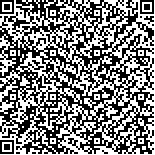本文已被:浏览 1073次 下载 2906次
投稿时间:2015-09-10 修订日期:2016-02-02
投稿时间:2015-09-10 修订日期:2016-02-02
中文摘要: 利用珠三角地区27个国家基本、基准气象站近50年(1963—2012年)的实际观测资料,结合地理信息系统数据分析了珠三角地区平均气温,平均最高和最低气温的年、季节及日较差的变化趋势以及城市化影响。分析表明:近50年珠三角地区年平均气温、平均最高和最低气温均呈现增加的趋势,日较差除从化、增城、珠海和上川岛呈现弱的正趋势外,其余地区呈现下降趋势。城市化对广州、佛山、惠州年平均气温和平均最低气温的影响均为正值,对日较差的贡献率均为负值,日较差的减小是由城市化造成的,就季节变化而言,城市化影响以秋季最大。改革开放后(1979—2012年)平均气温、平均最高和最低气温强增温区域比近50年范围扩大、强度增加,年平均最高气温增温明显,日较差的正值区域比近50年范围扩大、强度增加,主要出现在珠三角北部一带,高值中心达到0.25 ℃·(10 a)-1。就城市化而言,广州平均气温、平均最高和最低气温的城市化影响比近50年都有所降低,而佛山、惠州的平均气温、平均最低气温城市化影响均增大。
Abstract:Combined with the geographic information data, a data set of 27 stations over the Pearl River Delta Region including all of ordinary and national basic climatological stations was used to analyze the annual and seasonal trend and urbanization effect for mean temperature, mean minimum temperature, mean minimum temperature and diurnal temperature range, respectively. The main results are as follows. In 1963-2012, all the weather stations underwent evident warming in terms of annual mean temperature, annual mean maximum temperature and annual mean minimum temperature, and witnessed significant decrease in annual mean diurnal temperature range except Conghua, Zengcheng, Zhuhai and Shangchuandao. In Guangzhou, Foshan and Huizhou, the contribution of the annual urban warming was positive for the mean temperature and mean maximum temperature. However, the contribution rate of urbanization was negative for the diurnal temperature range, indicating that the reduction of daily temperature range is mainly caused by the urbanization. As for the season, urbanization effect in fall is the strongest. Since the reform and opening policy was implemented, the range of warming areas has become expanded and the strength of warming become much stronger than the counterpart in the recent 50 years in the respect of annual mean temperature, mean maximum temperature and mean minimum temperature. Especially the warming of annual mean maximum temperature is much evident. For the diurnal temperature range, the positive regions have also increased, mainly distributing in northern area of the Pearl River Delta with maximum rate of 0.25 ℃·(10 a)-1. Compared with the situation in the recent 50 years, the annual mean temperature, mean maximum temperature and mean minimum temperature has decreased in Guangzhou while the annual mean temperature and mean minimum temperature has increased in Foshan and Huizhou.
文章编号: 中图分类号: 文献标志码:
基金项目:中国气象局气候变化专项(CCSF201506)、高分气象遥感应用示范系统(一期)(32 Y301308 9001 13)和北京市气象局城市气候评估创新团队建设计划共同资助
引用文本:
黄宏涛,吴荣军,王晓云,刘勇洪,房小怡,杜吴鹏,程宸,2016.城市化对珠三角地区气温及日较差的可能影响[J].气象,42(7):847-856.
HUANG Hongtao,WU Rongjun,WANG Xiaoyun,LIU Yonghong,FANG Xiaoyi,DU Wupeng,CHENG Chen,2016.Effect of Urbanization on Temperature and Diurnal Temperature Range in Pearl River Delta[J].Meteor Mon,42(7):847-856.
黄宏涛,吴荣军,王晓云,刘勇洪,房小怡,杜吴鹏,程宸,2016.城市化对珠三角地区气温及日较差的可能影响[J].气象,42(7):847-856.
HUANG Hongtao,WU Rongjun,WANG Xiaoyun,LIU Yonghong,FANG Xiaoyi,DU Wupeng,CHENG Chen,2016.Effect of Urbanization on Temperature and Diurnal Temperature Range in Pearl River Delta[J].Meteor Mon,42(7):847-856.

